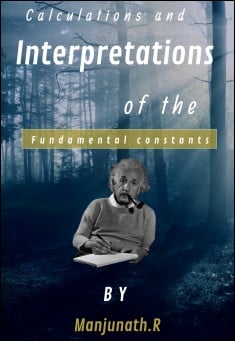Throughout all of the formulations of the basic equations of gravitation, quantum mechanics, electromagnetism, the nuclear physics and their application to the real world, there appear again and again certain fundamental invariant quantities called the fundamental physical constants –which are generally believed to be both universal in nature and have constant value in time. This book discusses the calculations and Interpretations of the Fundamental Constants which consistently appear in the basic equations of theoretical physics upon which the entire scientific study rests, nor are they properties of the fundamental particles of physics of which all matter is constituted. The speed of light signifies a maximum speed for any object while the fine-structure constant characterizes the strength of the electromagnetic interaction. An accurate knowledge of fundamental constants is therefore essential if we hope to achieve an accurate quantitative description of our physical universe. The careful study of the numerical values of the fundamental constants − as determined from various experiments − can in turn determine the overall consistency and correctness of the basic theories of physics themselves.
Snippets from the book:
If particles with intrinsic mass exceed the speed of light, then c loses its special status, giving rise to a host of other problems elsewhere in the world of physics, where c has been used in calculations, such as the equation in Albert Einstein's theory of special relativity that expresses the equivalence of mass and energy: E=mc2
Planck's constant defines the amount of energy that a electromagnetic radiation photon can carry − according to the frequency of the electromagnetic wave in which it travels.
The Boltzmann constant (kB) relates temperature to energy. It is a fundamental constant of physics occurring in nearly every statistical formulation of both classical and quantum physics. It is named after Austrian physicist and philosopher Ludwig Boltzmann, one of the pioneers of statistical mechanics.
The amount of energy possessed by a Schwarzschild Black Hole is equal to its mass multiplied by the square of the speed of light: E =Mc2, where: c is not just the constant namely the maximum distance a light can travel in one second in vacuum but rather a fundamental feature of the way space and time are unified to form space-time.
The Planck mass is approximately the mass of a black hole where quantum and gravitational effects are at the same scale: where its reduced Compton wavelength and half of its Schwarzschild radius are approximately the same.


















